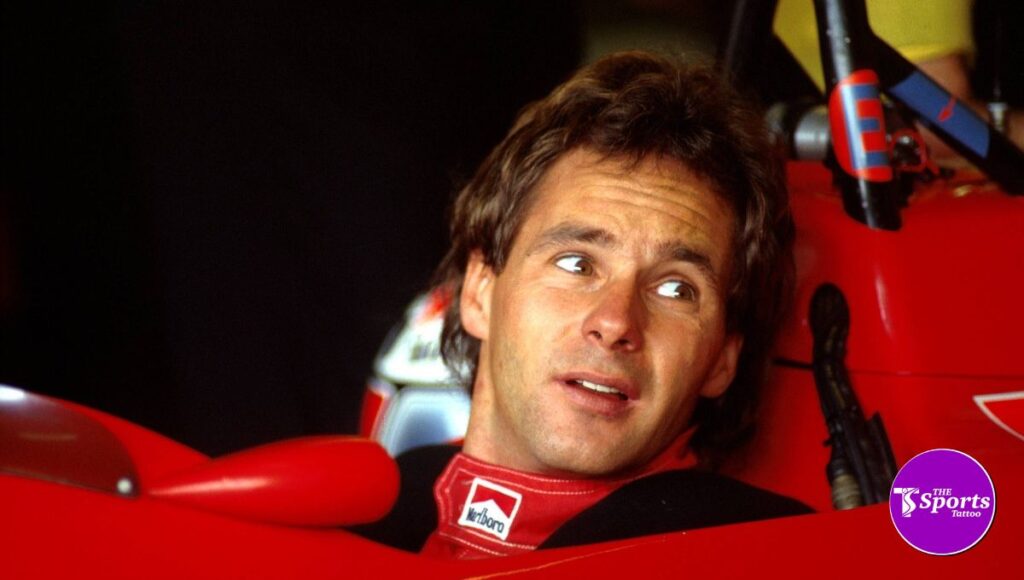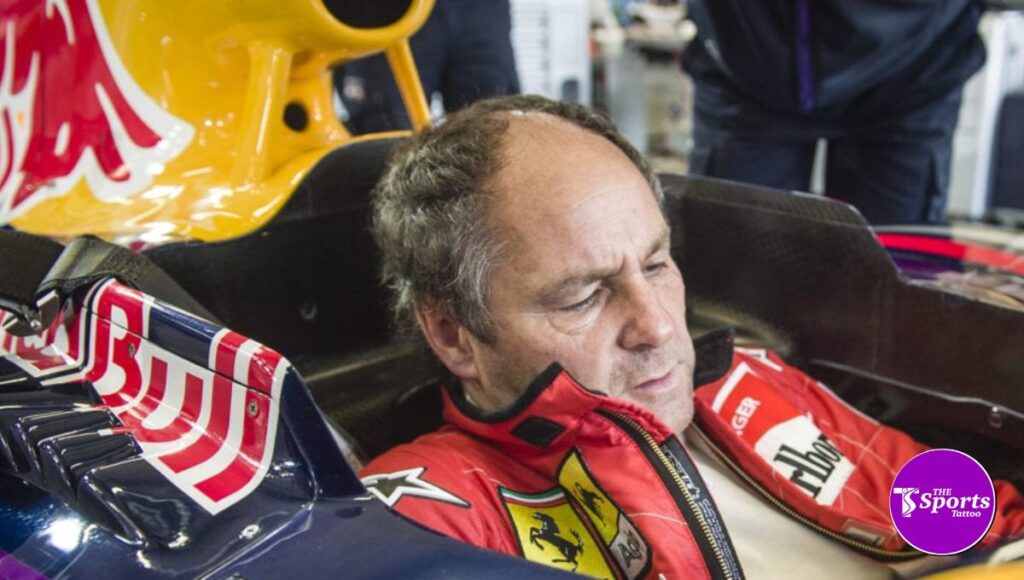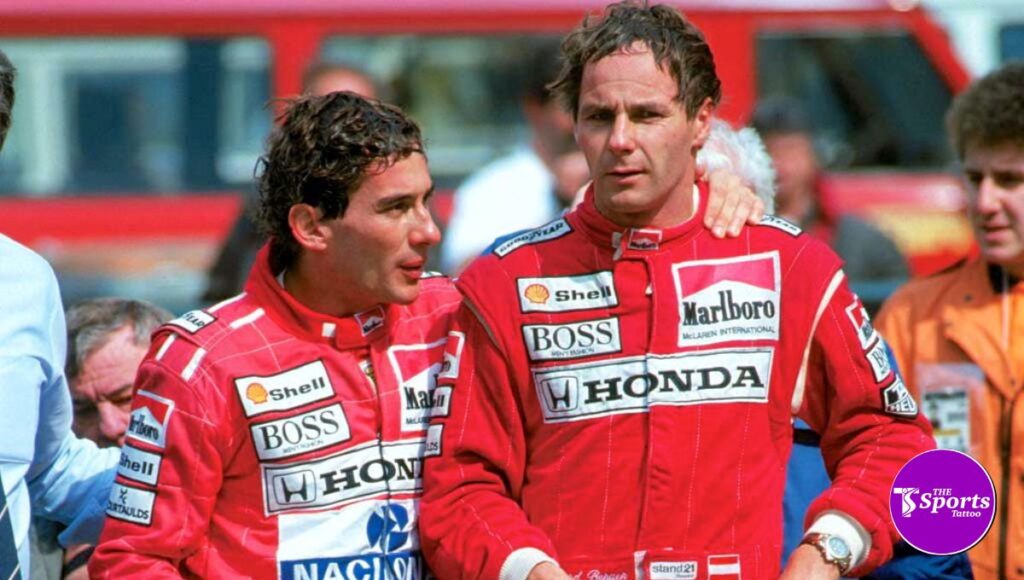Gerhard Berger Biography: Gerhard Berger is a former Formula One racing driver from Austria. He raced in Formula One for 14 seasons, finishing third in the championship twice, both times for Ferrari.
Gerhard Berger Biography
Gerhard Berger Biography: Gerhard Berger was born on August 27, 1959, in Wörgl, Austria. His father, Johann, ran his own truck company, and Gerhard later worked for him before being promoted to driver. Berger, a multiple race winner in European Formula Three, advanced to Formula One with the ATS team in 1984.

Gerhard Berger Wiki
| Name | Gerhard Berger |
| Date Of Birth | August 27, 1959 |
| Birth Place | Wörgl, Austria |
| Height | 6ft 1inch |
| Weight | N/A |
| Zodiac Sign | Virgo |
| Profession | Racing Driver |
| Net Worth | $5 Million |
| Car Collection | N/A |
Gerhard Berger Net Worth
According to Wikipedia, Forbes, and Business Insider, Gerhard Berger’s net worth is $5 million.
Also Read: Rubens Barrichello Biography, Wiki, Age, Height, Net Worth, F1 Career

Gerhard Berger Career
Berger joined Ferrari for the 1987 season, driving alongside Michele Alboreto and replacing Stefan Johansson. Berger came on strong in the second half of 1987, winning the season’s final two races following mechanical difficulties that stopped him from performing. The 1987 Ferrari F1/87 benefited from the efforts of ex-McLaren designer John Barnard, despite being designed by the Austrian Gustav Brunner. From the Hungarian Grand Prix onward, Ferrari returned to competition for race honors for the first time since 1985. Berger was closely trailing Nigel Mansell at the Hungaroring when he was obliged to retire. Berger dominated the Portuguese Grand Prix at Estoril from the pole position before spinning in the closing stages and finishing second under duress from Alain Prost.
The Austrian appeared to be on his way to a second consecutive victory at the Hermanos Rodriguez track for the Mexican Grand Prix as he once again dominated the race. Still, mechanical issues forced him to withdraw while in the lead. Success at both Suzuka & Adelaide for the Japanese and Australian Grands Prix, including pole positions in both events and the fastest lap in Adelaide, boosted Ferrari and Berger’s confidence heading into the winter season, and both the team and driver were favored to win the 1988 Formula One World Championship. In 1987, Berger out qualified colleague Alboreto 12–4, as he had done to Fabi in 1986. Berger’s victories also marked Ferrari’s first victory streak since Gilles Villeneuve won the Monaco and Spanish Grands Prix in 1981.

From 1990 to 1992, Berger worked at McLaren alongside Ayrton Senna. Due to his outstanding achievements for Benetton and Ferrari, his arrival was highly anticipated. A McLaren-Honda appeared to offer Berger his first real shot at the world championship. However, despite qualifying typically faster than his predecessor Alain Prost relative to Senna (frequently allowed second behind Senna), he rarely matched the Brazilian’s speed during races. Senna gifted him the 1991 Japanese Grand Prix, and he also won in Canada and Australia in 1992. During these three seasons, he won three times. During his three years at McLaren, Berger earned four pole positions and defeated Senna eight times in qualifying.
His debut at McLaren caused controversy when he out-qualified Senna for the 1990 United States Grand Prix pole position. Berger initially complained of an absence of space in the 1990 McLaren MP4/5B, designed in 1988/89 for the shorter Senna and Prost. Berger finished first at the 1990 Canadian Grand Prix, approximately 45 seconds clear of eventual winner Senna, but was penalized one minute for creeping at the start before the green lights. Berger also began the 1990 Mexican Grand Prix from pole position. Berger failed to win a race for his new team in 1990, while a friend Senna won his second Drivers’ Championship.
Berger was persuaded by Ayrton Senna and fellow citizen Niki Lauda to return to the Italian team in 1993. Lauda believed Berger’s partnership with Senna provided him with significant experience. The car’s active ride suspension made it hard to manage, and the Ferrari F93A spent most of the season in the lower points. Berger’s most excellent finish came in the 1993 Hungarian Grand Prix, where he finished third. In the season, Berger was involved in some fantastic incidents, including a collision with Michael Andretti at the start of the 1993 Brazilian Grand Prix and a spectacular crash with the Armco at the 1993 Portuguese Grand Prix after exiting the pits. Berger showed his fighting qualities best at the 1993 Monaco Grand Prix, where he recorded the second-fastest lap before attempting an opportunistic pass on Damon Hill’s Williams at the Loews hairpin while challenging for second place. The Austrian was forced to retire.




